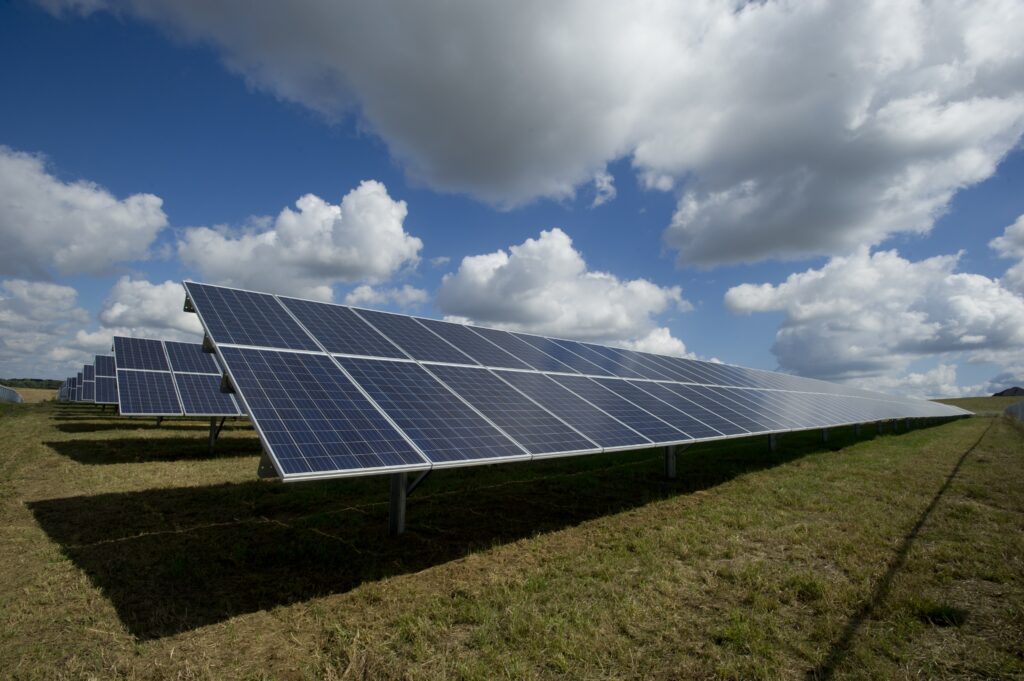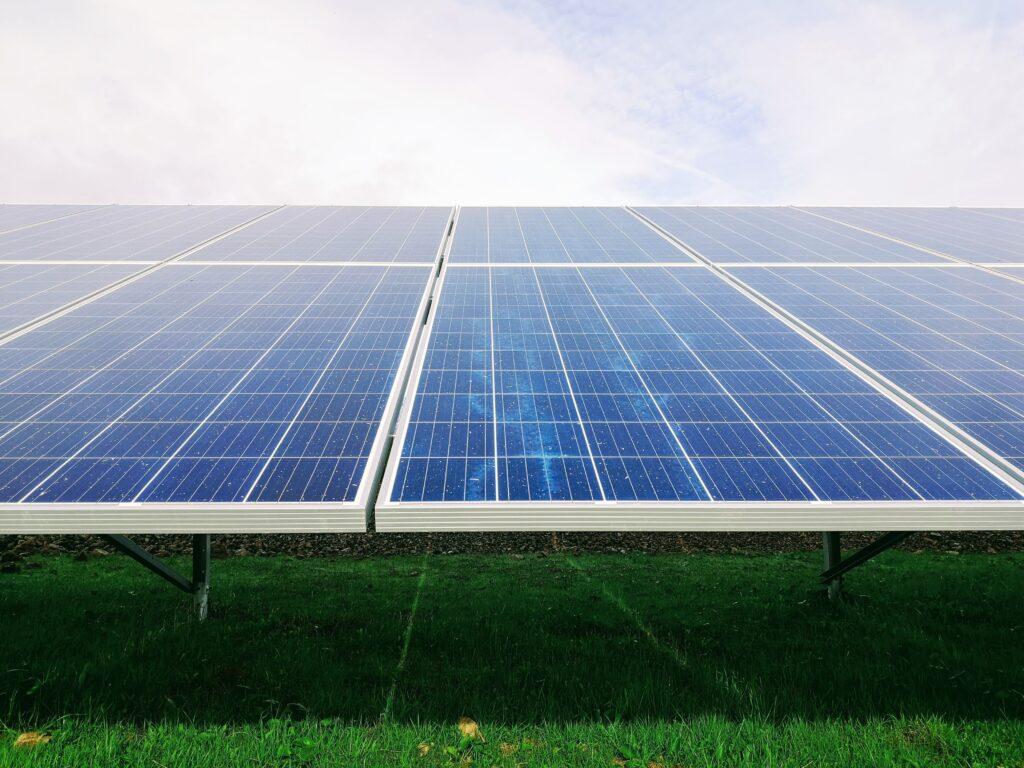Have you ever wondered what the real story is behind solar energy? There are so many articles and advertisements out there about the virtues of going solar, but what are they leaving out? In this eye-opening article, we reveal the hidden truths about solar energy that nobody tells you about. From its environmental impact to the financial considerations, we shed light on the lesser-known aspects of solar power. Get ready to uncover the secrets that the solar industry doesn’t want you to know.

The true cost of solar energy
Initial investment
When considering solar energy as an alternative power source for your home or business, it is important to be aware of the initial investment required. While solar panels have become more affordable in recent years, the upfront cost of purchasing and installing the necessary equipment can still be significant. This initial investment includes the cost of the solar panels themselves, mounting equipment, wiring, and inverters. However, it is essential to keep in mind that these costs can vary depending on the size of the system and the specific needs of your property.
Maintenance and repair costs
While solar panels are generally durable and require minimal maintenance, it is important to consider the potential costs of maintenance and repair over the system’s lifespan. While operating costs for solar energy systems are typically low, routine maintenance such as cleaning and inspection is recommended to ensure optimal performance. Additionally, if any components of the system were to malfunction or require replacement, there would be associated costs for repairs or replacements. It is advisable to budget for these potential expenses to ensure the long-term viability of your solar energy system.
Hidden installation fees
In addition to the initial investment for the solar panels and equipment, there may be hidden installation fees that can catch you off guard. These fees can include costs for permits, labor, and any necessary upgrades or modifications to your electrical system. It is important to thoroughly research and understand all potential installation costs before committing to solar energy to avoid any unexpected financial surprises.
Possibility of not enough sunlight
Dependence on geographical location
One crucial factor to consider with solar energy is the dependence on geographical location. The amount of sunlight your property receives will directly impact the efficiency and productivity of your solar panels. If you live in an area that experiences long periods of cloudy or overcast weather, your solar energy system may not generate as much electricity as expected. This could result in a longer payback period for your initial investment or limited energy generation throughout the year.
Seasonal variations in sunlight
Solar energy production can also be affected by seasonal variations in sunlight. Depending on your region, there may be significant differences in sunlight exposure between summer and winter months. The shorter days and lower angles of the sun during the winter can lead to decreased energy generation compared to the longer, sunnier days of the summer. It is important to consider these seasonal variations and their potential impact on your solar energy system’s output.
Influence of weather conditions
While solar panels are designed to withstand various weather conditions, extreme weather events can have an adverse effect on their performance. Hailstorms, heavy snowfall, or strong winds can damage or impair the functionality of solar panels. In such cases, repairs or replacements may be necessary, which could result in additional costs. It is important to be aware of the potential influence of weather conditions and factor in these possibilities when evaluating the overall costs and benefits of solar energy.
Energy storage limitations
Need for expensive storage systems
One of the limitations of solar energy is the need for additional storage systems to provide electricity during periods of insufficient sunlight. While solar panels generate electricity during the day, excess energy must be stored for use during nighttime or cloudy days. The most common storage solution is the use of batteries, which can be expensive to install and maintain. Adding battery storage to your solar energy system can significantly increase the overall cost of the system.
Battery lifespan issues
Another consideration with energy storage is the limited lifespan of batteries. Batteries used for solar energy storage have a finite number of charge-discharge cycles before they begin to degrade in performance. Depending on the battery technology and usage, you may need to replace the batteries within a certain timeframe, which can be an additional expense to account for. It is important to understand the lifespan and warranty of the batteries when considering the long-term costs of a solar energy system with energy storage.
Dependence on grid for backup
In some cases, relying solely on solar energy for power may not be enough to meet your needs. During extended periods of low sunlight or high energy consumption, your solar energy system alone may not provide sufficient electricity. In such situations, you would need to depend on the grid for backup power supply. This reliance on the grid can increase your overall energy costs and limit the self-sufficiency of your solar energy system.
Inefficiencies in energy conversion
Variable efficiency of solar panels
The efficiency of solar panels can vary depending on different factors, such as temperature, shading, and the angle at which they are installed. Some solar panels are more efficient than others, but they are also typically more expensive. It is important to consider the efficiency of the solar panels you choose to ensure you are maximizing the amount of energy generated and optimizing the return on your investment.
Energy loss in conversion process
When converting solar energy into usable electricity, there can be some energy loss in the conversion process. The conversion efficiency of solar panels and inverters can vary, with some losses occurring as heat or during transmission. These losses reduce the overall energy output of the system and should be considered when evaluating the performance and cost-effectiveness of solar energy.
Technological limitations
While solar energy technology has made significant advancements in recent years, there are still some technological limitations to be aware of. Currently, solar energy systems are not able to capture and convert all available sunlight efficiently. This limitation restricts the overall energy generation potential of solar panels. Ongoing research and development efforts aim to improve the efficiency and effectiveness of solar energy systems, but it is important to be mindful of the existing technological limitations when considering solar as an energy option.

Environmental impact
Energy and resources used in manufacturing
While solar energy is often touted as a clean and renewable energy source, it is important to consider the energy and resources required in the manufacturing process. The production of solar panels requires raw materials such as silicon, glass, and metals, which necessitate energy-intensive extraction, refinement, and manufacturing processes. The carbon footprint associated with these manufacturing processes should be taken into account when assessing the overall environmental impact of solar energy.
Issues with recycling and disposal
As solar panels reach the end of their lifespan, there is a need for proper recycling and disposal methods. While solar panels are designed to be durable, they will eventually need to be replaced. Currently, there are limited recycling facilities and processes in place for solar panels, which can create challenges for proper disposal. It is crucial to address these recycling and disposal issues to prevent environmental pollution and minimize the potential negative impact of solar energy systems.
Indirect environmental concerns
While solar energy itself is considered environmentally friendly, there are indirect environmental concerns associated with its infrastructure. The construction of solar farms or large-scale solar energy systems can lead to deforestation or disruption of natural habitats. Additionally, the transportation and installation of solar panels can contribute to carbon emissions if not properly managed. It is important to consider the holistic environmental impact of solar energy systems and ensure sustainable practices throughout their lifecycle.
Solar farm land use controversy
Displacement of wildlife
The establishment of solar farms often requires large expanses of land, which can result in the displacement of wildlife and disruption of ecosystems. The clearing of land to make way for solar panels can disrupt habitats, leading to the relocation or loss of animal species. It is important to carefully consider the potential impact on local wildlife and explore strategies to mitigate these effects when planning solar energy projects.
Impact on local ecosystems
Solar farms can also impact local ecosystems beyond wildlife displacement. The alteration of land for solar farms can lead to changes in water flow patterns, soil composition, and plant diversity. These alterations can have ripple effects on surrounding ecosystems, potentially impacting biodiversity and ecological balance. It is crucial to conduct thorough environmental impact assessments and implement mitigation measures to minimize any negative effects on local ecosystems.
Potential for land degradation
The intensive land use associated with solar farms can lead to land degradation if not managed properly. The construction and operation of solar farms can compact soil, disrupt natural drainage patterns, and contribute to erosion. Without appropriate land management practices, the land used for solar farms can become less fertile and lose its ability to support vegetation or agriculture. It is imperative to prioritize sustainable land management strategies to avoid long-term degradation and ensure the responsible use of land for solar energy purposes.

Complexity in setup and maintenance
Specialized knowledge requirements
The setup and maintenance of solar energy systems often require specialized knowledge and expertise. Installing solar panels, wiring them correctly, and integrating them with your electrical system can be complex tasks. It is crucial to work with qualified professionals or contractors who have experience in solar energy installation to ensure the system is set up correctly and safely. Additionally, ongoing maintenance and monitoring may require technical knowledge to troubleshoot any issues that arise.
Ongoing maintenance and monitoring
While solar energy systems are generally low-maintenance, ongoing maintenance and monitoring are necessary to ensure optimal performance and longevity. This includes regular cleaning of solar panels to remove dust or debris, inspection for any signs of damage or malfunction, and monitoring of energy production to identify any potential issues. Dedication to ongoing maintenance and monitoring is essential to maximize the efficiency and reliability of your solar energy system.
Handling technical issues
Like any other complex system, solar energy systems can experience technical issues that may require troubleshooting and repairs. These technical issues can range from minor faults in wiring to more significant problems with inverters or other components. It is important to be prepared to handle these technical issues promptly, either through your own knowledge and expertise or by having access to professionals who can address them. Being proactive in addressing technical issues will help ensure the proper functioning and effectiveness of your solar energy system.
Restrictions and regulations
Zoning issues
The installation of solar energy systems may be subject to zoning regulations, which can vary depending on your location. Zoning issues can include restrictions on the size or placement of solar panels, aesthetic considerations, or compliance with building or electrical codes. These zoning regulations can add complexity to the installation process and potentially limit the feasibility of solar energy systems on certain properties. It is important to research and understand the zoning regulations in your area before proceeding with a solar energy project.
Permit and inspection process
Before installing a solar energy system, you may need to obtain permits and undergo inspections to ensure compliance with local regulations and safety standards. The permit and inspection process can be time-consuming and may involve additional costs. Additionally, the requirements and procedures for obtaining permits and passing inspections can vary from one jurisdiction to another, adding complexity and potential delays to the installation process. It is important to be prepared for the permit and inspection requirements in your area to avoid any setbacks or complications.
Grid interconnection regulations
If you plan to connect your solar energy system to the grid, there may be regulations and requirements that need to be met. These regulations can include safety standards, technical specifications, and interconnection agreements with the utility company. The process of grid interconnection can involve paperwork, inspections, and potentially additional costs. It is essential to understand the grid interconnection regulations in your area and work with your utility company to ensure compliance and a smooth integration of your solar energy system with the existing grid infrastructure.
Fluctuating government incentives
Variance in government support
Government support for solar energy can vary significantly depending on the country, state, or region. Incentives such as tax credits, grants, or rebates may be available to offset the initial investment and encourage the adoption of solar energy. However, these government incentives can change over time due to shifts in political priorities or budget constraints. The variation in government support can impact the overall affordability of solar energy systems and the financial viability of investing in solar power.
Reliance on incentives for affordability
For many individuals and businesses, the affordability of solar energy systems heavily relies on government incentives and subsidies. Without these incentives, the initial investment and operating costs can be prohibitively high. This reliance on incentives can make the long-term financial viability of solar energy more uncertain, as changes to government policies or the expiration of incentives can impact the return on investment. It is important to carefully consider the financial implications and sustainability of solar energy systems beyond the availability of government incentives.
The politics of solar energy
The adoption and support of solar energy are influenced by political factors and the overall energy policy of a country or region. Government decision-making, legislation, and regulations surrounding solar energy can be subject to political debates, lobbying efforts, and changing priorities. The politics of solar energy can introduce uncertainties and challenges, as the future of government support, regulations, and incentives may be subject to shifts in political power or public opinion. Understanding the political landscape and potential implications of solar energy policies is crucial when considering its long-term viability.
Future of solar technology
Possible improvements in efficiency
As solar technology continues to evolve, there is potential for significant improvements in efficiency. Ongoing research and development efforts focus on enhancing the performance of solar panels, improving the conversion of sunlight into electricity, and increasing overall energy generation. These advancements could lead to higher energy output from solar energy systems, making them even more cost-effective and attractive as an alternative energy source.
Potential decrease in costs
Along with technological advancements, the future of solar technology also holds the potential for cost reductions. As manufacturing processes become more streamlined and economies of scale are achieved, the cost of solar panels and associated equipment may decrease. This decrease in costs can make solar energy systems more accessible and affordable for a wider range of individuals and businesses, further accelerating the adoption of solar power.
Emerging solar technologies and applications
Beyond traditional solar panels, emerging technologies and applications hold promise for the future of solar energy. These include thin-film solar panels, building-integrated photovoltaics, and solar thermal technologies. Thin-film solar panels offer increased flexibility and versatility in design and integration, while building-integrated photovoltaics seamlessly incorporate solar panels into building materials. Solar thermal technologies focus on harnessing solar energy for applications such as water heating or space heating. The development and implementation of these emerging solar technologies can expand the possibilities and potential benefits of solar energy in various sectors.
In conclusion, while solar energy presents numerous advantages as a renewable energy source, there are several important factors to consider beyond what is often initially discussed. The upfront investment, maintenance costs, potential limitations due to insufficient sunlight or energy storage, inefficiencies in energy conversion, environmental impact, land use controversies, complexity in setup and maintenance, restrictions and regulations, fluctuating government incentives, and the future of solar technology are all vital aspects to be aware of before committing to solar energy. By understanding the true cost and complexities associated with solar energy, individuals and businesses can make informed decisions to ensure the long-term success and sustainability of their solar energy systems.




